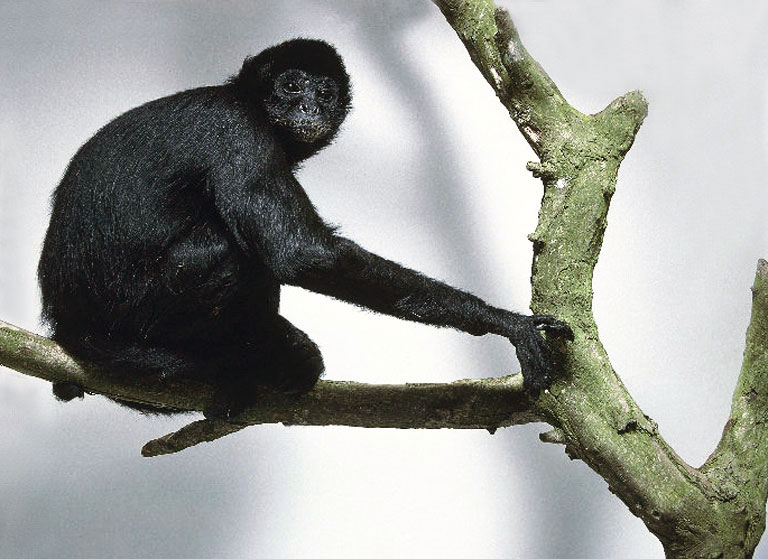It turns out that the ones who suffer more than all the other species are the Koafs. According to an extensive survey, 101 species of cashews are used in traditional ceremonies and customs as religious aids, for medicine or witchcraft, a use that harms species, some of which are in danger of extinction and others on the verge of extinction

Not long ago I referred toThe global trade in wild animals (and their parts) and its severe impact on populations and species in the wild. We already know about the world-wide trade in past times (one of the trade routes through which caravans carrying special species passed is the perfume route that crosses the Negev between Petra and Gaza), but the shortening of the routes by modern means of transportation together with the inclusion of the means of "harvesting" Species of flora and fauna also shorten the chances of the species to continue surviving.
Another and ancient reason for harming species in nature is... traditions and superstitions. Traditions and beliefs that put many species in danger, especially ... freezes (primates). We have all heard of the superstitions why tigers, bears, sharks, rhinos and others are hurt. In most cases the parts of the animals are considered to heal different senses and diseases, but mostly they are considered to be sexually arousing.
- It has already been said that "those who feel the need to consume rhinoceros horn powder to "get stronger" can bite their fingernails - (both from the same protein - carotene)". As for tiger claws and other "inventions"... their effectiveness is equal, even in our congregation they go out and hit palm trees to cut down mulberry trees and alternately wave a rooster for atonement? But convincing believers of something different from their faith is difficult.
It turns out that the ones who suffer more than all the other species are the Koafs. According to an extensive survey, 101 species of cashews are used in traditional rituals and customs as religious aids, for medicine or for witchcraft, a use that harms species, some of which are in danger of extinction and others on the verge of extinction. The survey details are published in the UK Mammal Society monthly.
Of the 390 species surveyed, almost a quarter are hunted for "traditional" uses. 47 species are hunted for "medical" needs, 34 species are hunted for witchcraft and religious purposes and 20 for both uses. In the New World, out of 139 species of monkeys, 19 species are hunted for food. In Africa, out of 79 species, 25 species are hunted, in Asia, out of 79 species, 47 are hunted. In Madagascar, out of 93 species, 10 are hunted.
Freezers that are classified into 38 types and 10 different families, from tiny ones like loris, to small ones like langurs or macaques to apes... gorillas. Despite laws and regulations that are supposed to protect the animals, the hunter continues and the senseless use of species that are all protected, many of them on the verge of extinction.
The spider monkey (black-faced) from South America (Ateles chamek) as well as the capuchin (Cebus apella) are eaten as a medicine for various diseases, among them: snake bites, scorpion stings, for arthritis, cough, shoulder pain, eczema and more, gorilla parts ( in Africa) can be eaten by pregnant women. In India magical powers are attributed to the brain of the macaque (Macaca assamensis) and to get the best out of it it is advisable to eat it while the monkey is alive. For this purpose there is a special table, through a hole in the table the head of the monkey (animal) is inserted, boiling water is poured over the head, because of the heat the Golgotha cracks, the "patient" eats the brain through the cracks with a special spoon. After such a process, it is clear that the "patient" does not remain sane (if he was sane before), and becomes a sorcerer and sees the occult.
Bones of other monkeys and loris are dissected and the powder is used for drinking (like tea), gall bladder, fat and blood of monkeys and loris are eaten or used as ointments. In Sierra Leone (Africa) it is customary to tie a chimpanzee bone around a baby's waist to strengthen it and stimulate its arrival into adulthood.
In India they carry a langur eye (Semnopithecus entellus) as a talisman that increases... courage. Dwarf loris from Vietnam are smuggled to China for use in the pharmaceutical industry. In the same way, species of langurs are also hunted to be used as amulets, medicines, and energy enhancers.
But not everything is negative, beliefs and folk tradition also protect monkeys and koi. In parts of Asia, the Hindu belief protects the long-tailed macaque (Macaca fascicularis) and in Bali, the langur monkeys (Semnopithecus spp) are protected by tradition, a belief and tradition that helped maintain the lemur populations in remote parts of Guinea, the Manon people sanctify the chimpanzees and protect them, so that traditions and beliefs can be harnessed for the protection of nature.
